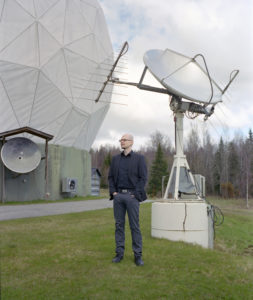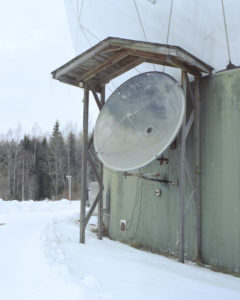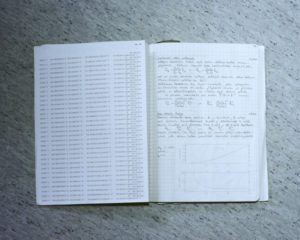Since the early 20th century, astronomy has been evolving far beyond the optical telescope. While powerful optical telescopes are still very much a viable tool for astronomers, astronomical scientists are relying on new technologies, such as radio interferometry, to look deeper into space. Interferometry combines the results of several radio telescopes situated around the world to create a much bigger astronomical picture as if taken by a single telescope the size of Earth. In this TSB conversation, Joni Tammi, the director of Metsähovi Radio Observatory, discusses the evolution of imaging technologies in astronomy.

*The following interview is slightly edited for readability
In astronomy, producing imagery is an important method of scientific investigation. When we look at astronomical images today, what are we actually looking at? How are these images produced?
JT: It depends on the kind of picture. The most common astronomical pictures are different kinds of photographs, such as images from optical astronomy, or in general ”pictures as the results of physical light hitting a receptor”. The light can be an ultraviolet or infrared radiation, or even X-rays. Basically, what we are always detecting is light or, more specifically, photons coming from different sources that are captured by cameras and other detectors to investigate what were the situation and conditions when those photons were created. However, radio telescopes enable us to take different kinds of pictures using different technologies or techniques. The result is different from a photograph as such.
In some photos, the process is much more complicated than just photons hitting the sensors. So are we still seeing a photograph or is it more like a data visualization?
JT: It is more similar to a data visualisation. For example, in Metsähovi, we process solar maps of the Sun. Since the Sun is so big, we need to scan the telescope across it several times and make maps in order to study the Sun’s features. Lots of processing is also needed when we combine data captured from several telescopes and create the final images using interferometry, which is a completely different imaging method. In this case, telescopes around the world act as little pieces of a bigger telescope. You can imagine the earth as a broken telescope, and the individual radio telescopes are the pieces that need to be put together. Telescopes around the world look at the same astronomical object just like the pieces of a “whole” telescope would. Now we just collect the data in pieces around the world, and later combine them to produce a picture as if the whole Earth were one big telescope.

How different is the astronomical apparatus that you are using in your research compared to a normal camera?
JT: The optical telescope is often built in a similar way, optically, as a normal camera, it’s just much more specialised. A radio telescope, on the other hand, is completely different. For example, you cannot create pictures with one single radio telescope, unless the target is so big and so close that its larger than the telescope’s field of view; like the Sun. A radio telescope is more like a radio receiver or a microphone, which we use to ‘listen’ to the part of the universe the telescope points to. It is very different from optical telescopy. Within the astronomical community, we even use the term listening, because even though there is no actual audio, it seems more appropriate because we are not seeing, we are just listening how bright, how loud some sources are.
There are also other observational technologies, such as neutrino detectors, cosmic ray detectors and even more complicated telescopes. They operate with yet another completely different methods. They do not even observe light from the astronomical objects, but for example extremely energetic particles from them, that hit the atmosphere and make small explosions. These telescopes detect those explosions and from those explosions, they deduce physical properties. So, again, a completely different technique! This is called multi-messenger astronomy, and it is the recent development of mainstream modern astronomy. Just ten years ago the best we could do was multi-wavelength astronomy,meaning that you don’t only capture optical light, but electromagnetic waves outside of the optical spectrum e.g. radio, infrared, X-ray, Gamma-rays and so on. Multi-messenger, on the other hand, means that it does not detect just photons nor electromagnetic waves, but also neutrinos, cosmic rays or even gravitational waves.
We talked about how, right now, the astronomical community is trying to capture the first picture of a black hole. The picture has already been taken but the data is still being processed. What makes the analysis so complicated?
JT: Data processing is still really difficult for many reasons. One reason is that we have never processed data captured with so much detail at such high frequency. Data processing technologies are the same as in other very long baseline interferometry telescopes around the world. In this case, the selected frequencies, or in other words the wavelengths, make all data processing really really difficult but allow you to get a really accurate picture. By using higher frequency, or in other words shorter wavelength, you can get more resolution, you can see smaller details, and this is now what the people in this Event Horizon Telescope team are doing — they are using very high frequency. On one hand, they can get the most accurate picture ever, but on the other hand, it is taking a long time because the technique has never been used before at this frequency with this much data.

So the process will probably take very long.
JT: It has taken almost a year! We received the data already last summer. Usually data processing is not as difficult as in this case. For example in Metsähovi, as well as in other radio observatories around the world, we are gathering and streaming data in real-time to a central computer that processes the results and produces the final data. You can get 4Gb, or maybe even 8Gb of data per second, from each telescope. So 4Gb/s from 10 or 15 telescopes means about 50-60Gb/s. The amount of data is so enormous, so huge that it becomes really complicated to process and compress into one picture. A 10 Megapixel camera will take 10Mb pictures, now we can have easily 10 Terabytes pictures , so you can imagine how putting together the data of the first picture of a black hole is a huge task.
(PS. The data processing team now believes they have overcome the problems and are meeting this summer to finalise the processing. My colleague, who is in the team and who has seen the preliminary results, said that although he is not allowed to say what the results really are, he has probably never been as excited about his job before, so I’m guessing the results will be quite worth the wait!)
Interview and photos by Sheung Yiu